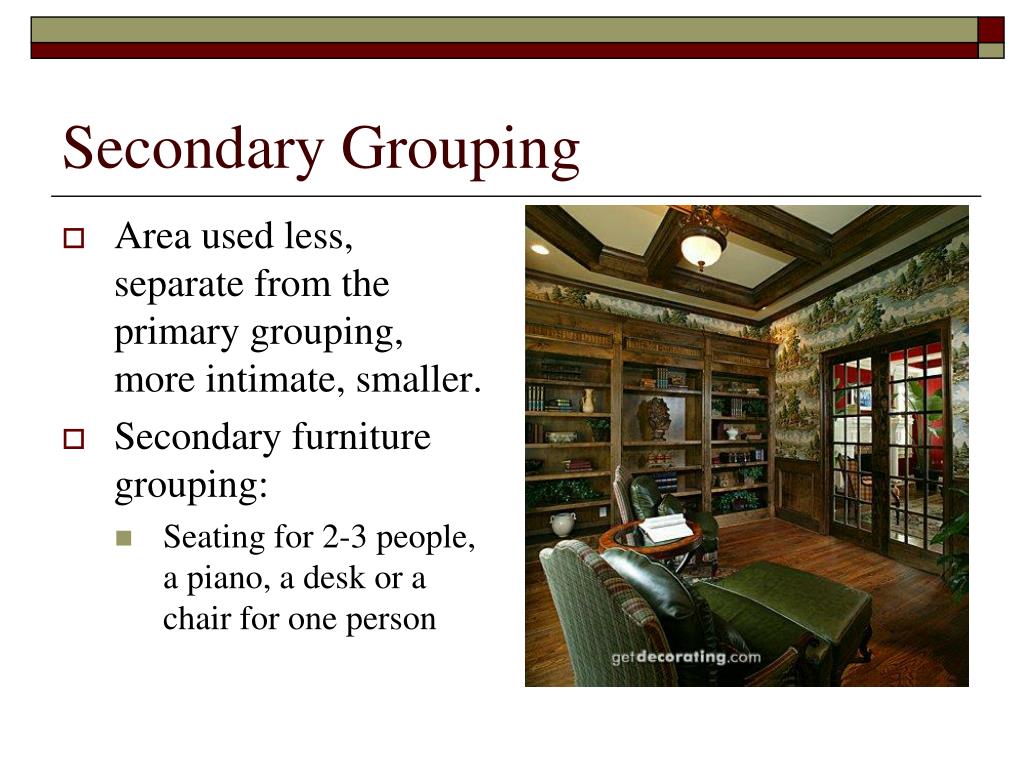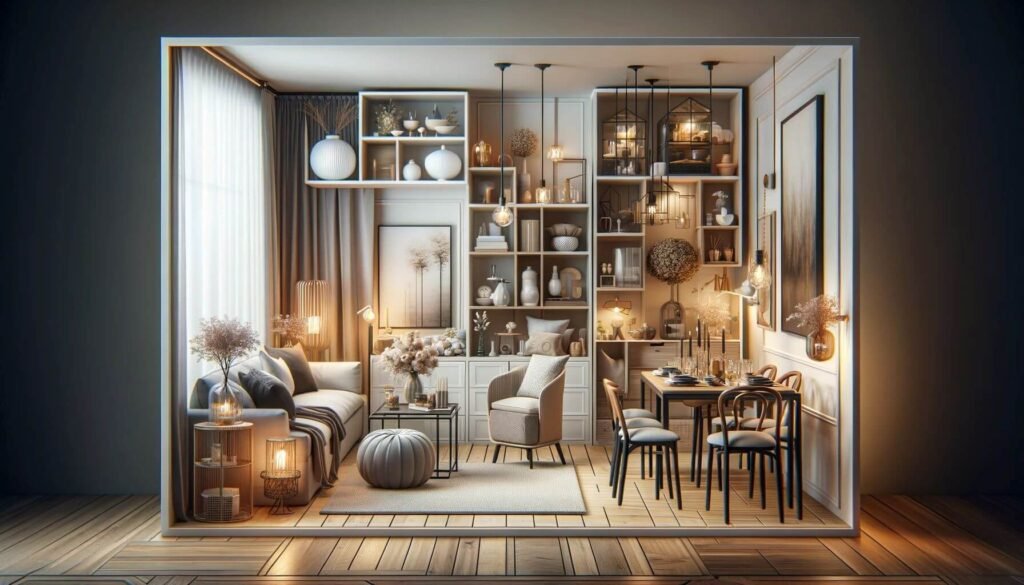As an Amazon Associate I earn from qualifying purchases.
A secondary furniture grouping is an arrangement of additional furniture within a room. This setup enhances the space’s functionality and aesthetic appeal.
Imagine your living room with a cozy corner for reading or a game table for family fun. These are examples of secondary furniture groupings. They provide extra areas for specific activities, complementing the main seating arrangement. This clever use of space makes your home more versatile and inviting.
Whether it’s a quiet nook or a lively conversation spot, secondary furniture groupings add charm and practicality to any room. Let’s explore how these setups can transform your living space.

Credit: www.splitenz.ca
Introduction To Secondary Furniture Grouping
In interior design, furniture arrangement plays a crucial role. It impacts the functionality and aesthetics of a space. One important concept is secondary furniture grouping. Understanding this concept can help create a cohesive and inviting environment.
Definition And Purpose
A secondary furniture grouping refers to a smaller, intentional arrangement of furniture within a larger room. This grouping often complements the primary furniture arrangement. Secondary groupings serve specific functions, like reading, socializing, or working.
These groupings can be formed using chairs, tables, ottomans, or other smaller pieces. They provide additional seating or activity areas without disrupting the main layout. The purpose is to enhance the room’s usability and comfort.
Importance In Interior Design
Secondary furniture groupings are essential in interior design for several reasons:
- Functionality: They create dedicated spaces for different activities.
- Aesthetics: They add layers of visual interest and depth.
- Flow: They help maintain a smooth traffic flow within the room.
- Balance: They ensure the space feels balanced and harmonious.
| Function | Example |
|---|---|
| Reading Nook | Armchair, side table, lamp |
| Conversation Area | Two chairs, small coffee table |
| Work Space | Desk, chair, bookshelf |
Incorporating these groupings can make a big difference. They can transform a room from a single-use space to a multifunctional one. This is especially important in small homes or apartments. Here, maximizing every square inch is crucial.
By carefully planning secondary furniture groupings, you can create a more dynamic and engaging space. This approach ensures that every corner of your room is both beautiful and functional.

Credit: www.youtube.com
Choosing The Right Furniture
Choosing the right furniture for your secondary furniture grouping can be tricky. It requires a balance between functionality and aesthetics. The right choice can enhance your space, making it both beautiful and practical.
Types Of Furniture
There are many types of furniture to consider for a secondary grouping. Common pieces include:
- Side tables
- Accent chairs
- Ottomans
- Bookshelves
- Benches
Each piece should serve a purpose and complement the room’s main furniture. For example, accent chairs can provide extra seating while adding a splash of color. Side tables can hold lamps, books, or decorative items.
Balancing Function And Aesthetics
It is important to balance function and aesthetics in your furniture choices. Functional furniture meets the needs of the room. Aesthetically pleasing furniture enhances the room’s look.
Consider the following tips to achieve this balance:
- Assess your needs: Identify the primary function of each piece.
- Match the style: Choose furniture that matches or complements your existing decor.
- Think about space: Make sure the furniture fits well within the space without overcrowding.
Tables, chairs, and shelves should not only look good but also serve a practical purpose. For example, a stylish ottoman can also offer storage space.
By keeping these tips in mind, you can create a secondary furniture grouping that is both beautiful and functional. This balance ensures that your space is not only inviting but also practical for everyday use.
Creating A Focal Point
Creating a focal point in a room can elevate its overall design. A secondary furniture grouping can help you achieve this. It draws attention and creates a sense of balance. This setup can enhance both style and functionality. Let’s explore how to create a focal point with secondary furniture groupings.
Using Statement Pieces
Statement pieces can anchor your secondary furniture grouping. Think of an eye-catching coffee table or a unique chair. These items should stand out and draw attention. They add character and set the tone for the space. Choose pieces that complement your room’s theme.
Arranging For Visual Impact
Arrangement plays a key role in creating a focal point. Place your statement piece at the center of the grouping. Surround it with complementary furniture. This creates a cohesive look. Ensure there is enough space for movement. Avoid clutter to maintain focus on the main piece.
Balance is important. Distribute items evenly around the focal point. Use symmetry to guide the eye. This enhances visual appeal. Different heights add depth and interest. Mix tall and short items for a dynamic setup.

Credit: www.slideserve.com
Optimizing Space Utilization
Optimizing space utilization is crucial in modern living spaces. It’s about making the most out of every square foot. Secondary furniture groupings play a vital role in this. They help create functional and aesthetically pleasing spaces. Let’s explore how to maximize space with secondary furniture groupings.
Maximizing Small Areas
Small areas can feel cramped. Secondary furniture groupings can change that. Place a small table and two chairs in a corner. It creates a cozy reading nook. Use nesting tables. They can be tucked away when not in use. Wall-mounted shelves save floor space. They offer storage and display areas. Mirrors add depth and make a room appear larger.
Multi-functional Furniture
Multi-functional furniture is a great solution for optimizing space. A sofa bed can serve as seating during the day and a bed at night. Storage ottomans can be used for seating and storage. Fold-out desks provide a workspace when needed. They can be folded away when not in use. Modular furniture can be rearranged to fit different needs.
Enhancing Comfort And Usability
Creating a secondary furniture grouping in your home can significantly improve comfort and usability. This setup can add a cozy nook for reading, conversation, or relaxation. By carefully selecting comfortable seating and incorporating practical elements, you can transform a simple space into a welcoming and functional area.
Selecting Comfortable Seating
Choosing the right seating is crucial. Comfortable chairs or small sofas can make a big difference. Here are some tips:
- Ergonomic Design: Look for chairs with good lumbar support.
- Soft Cushions: Ensure cushions are plush and inviting.
- Durable Fabric: Opt for easy-to-clean, long-lasting materials.
Consider different types of seating:
| Type | Benefits |
|---|---|
| Armchairs | Provide comfort and support |
| Bean Bags | Offer a relaxed and casual vibe |
| Loveseats | Perfect for small spaces |
Incorporating Practical Elements
Adding practical elements to your secondary furniture grouping is essential. These elements can enhance the functionality of the space.
- Side Tables: Place small tables next to seating for convenience.
- Lamps: Use floor or table lamps for adequate lighting.
- Storage Solutions: Include ottomans or baskets for extra storage.
Think about the layout:
- Ensure there’s enough space to move around.
- Place seating to encourage conversation.
- Keep frequently used items within easy reach.
By focusing on comfort and practicality, your secondary furniture grouping can become a favorite spot in your home.
Integrating With Existing Decor
Integrating a secondary furniture grouping into your home decor can be seamless. The key lies in harmonizing it with your existing design elements. This can elevate your space and create a cohesive look.
Matching Color Schemes
Matching the color scheme of your secondary furniture grouping with your existing decor is vital. Choose colors that complement the primary palette of your room. This ensures a unified appearance without clashing tones.
Consider the existing wall colors, flooring, and primary furniture. Select secondary pieces that either match or harmonize with these colors. This creates a balanced and visually pleasing environment.
Complementary Styles
Complementary styles help in blending the secondary furniture grouping with your home. If your primary furniture is modern, choose secondary pieces that have a similar vibe. This maintains a consistent aesthetic.
Mixing styles can work if done thoughtfully. Pair a rustic coffee table with contemporary chairs for an eclectic look. The key is to find a common thread, like material or shape, that ties them together.
Lighting And Ambiance
Lighting and ambiance are crucial elements in any secondary furniture grouping. They help set the mood and enhance the overall aesthetic. Good lighting can transform a space, making it more inviting and functional.
Choosing The Right Lighting
Choosing the right lighting fixtures is essential for creating the desired ambiance. Different rooms require different types of lighting. For example, a living room might benefit from a combination of task lighting and ambient lighting.
- Task lighting: Ideal for specific activities like reading or writing.
- Ambient lighting: Provides overall illumination for the room.
- Accent lighting: Highlights particular objects or architectural features.
Consider the color temperature of the bulbs. Warm light creates a cozy feel, while cool light makes spaces feel more energetic. You can use dimmable lights to adjust the brightness and set the perfect mood.
Creating Cozy Atmospheres
Creating a cozy atmosphere involves more than just lighting. It requires a thoughtful arrangement of furniture and accessories. Soft textures, warm colors, and layered lighting contribute to a cozy setting.
| Element | Contribution |
|---|---|
| Soft Textures | Add warmth and comfort |
| Warm Colors | Create an inviting feel |
| Layered Lighting | Enhances the depth and dimension |
Use floor lamps and table lamps to create pools of light. These light sources can make a room feel more intimate. Adding candles or fairy lights can also add a warm glow.
Positioning your furniture correctly is key. Arrange seats around a central point like a coffee table or fireplace. This makes the space feel more cohesive and inviting.
With thoughtful choices, lighting and ambiance can transform any secondary furniture grouping into a welcoming retreat.
Personalizing Your Space
Creating a secondary furniture grouping is about more than just functionality. It’s about making your space feel personal and unique. These groupings offer a chance to reflect your taste and personality. They turn a simple room into a warm and inviting environment. Let’s explore how you can add personal touches and showcase your collections.
Adding Personal Touches
Personal touches make a space feel like home. Think about adding items that reflect your personality. Consider the following:
- Throw pillows with unique patterns or colors.
- Rugs that add texture and warmth.
- Lamps with interesting designs or vintage styles.
- Artwork that resonates with you.
These items can transform a secondary furniture grouping into a cozy retreat. Choose pieces that speak to you. This makes your space feel more welcoming and genuine.
Showcasing Personal Collections
Your collections tell a story. They add character to your space. Use your secondary furniture grouping to display these cherished items:
| Collection Type | Display Ideas |
|---|---|
| Books | Arrange them on a stylish bookshelf. |
| Photos | Create a gallery wall with your favorite frames. |
| Travel Souvenirs | Use floating shelves to highlight each item. |
| Vintage Items | Mix them with modern pieces for an eclectic look. |
Display your collections with pride. They make your space unique and tell your story. Use your secondary furniture grouping to bring these items to life. It creates a focal point in your room and sparks conversation.
Common Mistakes To Avoid
Creating the perfect secondary furniture grouping in your home can be tricky. Many people make common mistakes that disrupt the harmony of the space. Knowing what to avoid can help you design a more inviting and functional area.
Overcrowding The Space
One frequent mistake is overcrowding the space with too many pieces. A room full of furniture can feel cramped and chaotic. This can make it difficult to move around comfortably. Choose a few key pieces and ensure they fit well within the room. Less is often more.
Ignoring Proportions
Another common error is ignoring the proportions of the furniture. Large pieces can dwarf smaller ones, making the room look unbalanced. Similarly, tiny items can get lost in a spacious area. Consider the size of each piece in relation to the others. Aim for harmony in scale to create a cohesive look.
Final Thoughts
Understanding secondary furniture grouping can transform your living space. These groupings add functionality and aesthetics. They are essential in creating a balanced and inviting home environment.
Summary Of Key Points
- Definition: Secondary furniture groupings are smaller setups within a room, distinct from the main arrangement.
- Purpose: They add functionality, provide additional seating, and enhance the room’s flow.
- Examples: Reading nooks, conversation corners, or mini dining areas.
- Placement: Consider traffic flow, lighting, and purpose when arranging.
- Flexibility: These groupings can be easily adjusted to suit different needs.
Encouragement To Experiment
Don’t hesitate to try new arrangements. Move furniture around. See what works best. Create a reading nook by a window. Add a small table with two chairs in a corner. Experimenting helps find the perfect setup.
Use different textures, colors, and styles. Mix modern with vintage. Combine soft fabrics with wooden elements. This adds personality to your space.
| Element | Suggestion |
|---|---|
| Lighting | Use floor lamps or table lamps for focused light. |
| Rugs | Add area rugs to define the space. |
| Plants | Incorporate plants to bring life and color. |
Remember, secondary furniture groupings are about making the space your own. Enjoy the process. Keep experimenting until it feels just right.
Frequently Asked Questions
What Is A Secondary Furniture Grouping?
A secondary furniture grouping is an additional arrangement of furniture. It complements the primary setup. It adds functionality and aesthetics to a space.
How Do You Create A Secondary Furniture Grouping?
To create a secondary furniture grouping, choose complementary pieces. Arrange them to enhance the room’s primary layout. Ensure they serve a functional purpose.
Why Are Secondary Furniture Groupings Important?
Secondary furniture groupings improve room functionality. They create cozy spots for conversation or relaxation. They also enhance the room’s overall aesthetic appeal.
Where Should Secondary Furniture Groupings Be Placed?
Place secondary furniture groupings in underutilized areas. Corners, near windows, or by a fireplace are ideal. Ensure they don’t disrupt the main traffic flow.
Conclusion
Secondary furniture groupings add comfort and functionality to any space. They create cozy spots for conversations or relaxation. These arrangements can transform a room, making it more inviting. Consider the purpose and flow of your space. Choose pieces that complement your main furniture.
Experiment with different layouts and styles. Simple changes can make a big difference. With thoughtful planning, secondary furniture groupings enhance your home. They provide extra seating, storage, and style. Enjoy the flexibility they offer. Make your space truly yours.
As an Amazon Associate, I earn from qualifying purchases.


